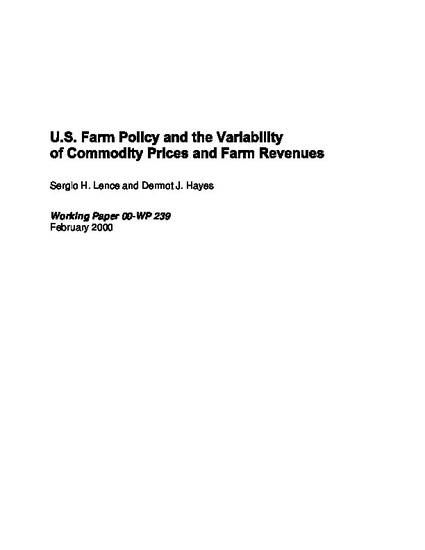
Historically, the U.S. government has had a substantial involvement in the agricultural sector. Lence and Hayes use a dynamic, three-commodity, rational-expectations storage model to compare the impact of the Federal Agricultural Improvement and Reform (FAIR) Act of 1996 with a free-market policy and with the agricultural policies that preceded the FAIR Act. They show that the transitional payments created to replace the pre-FAIR deficiency payments are much lower than the payments they replaced, which does reduce farm revenues. An important finding of the study is that the main economic impacts of the pre-FAIR scenario, relative to the free-market regime, were to transfer income to farmers and to substitute government storage for private storage in a way that did little to distort prices or to stabilize farm incomes.
Available at: http://works.bepress.com/dermot_hayes/187/

This working paper was published as Lence, Sergio H. and Dermot J. Hayes, "U.S. Farm Policy and the Volatility of Commodity Prices and Farm Revenues," American Journal of Agricultural Economics 84 (2002): 335–351, doi:10.1111/1467-8276.00301.